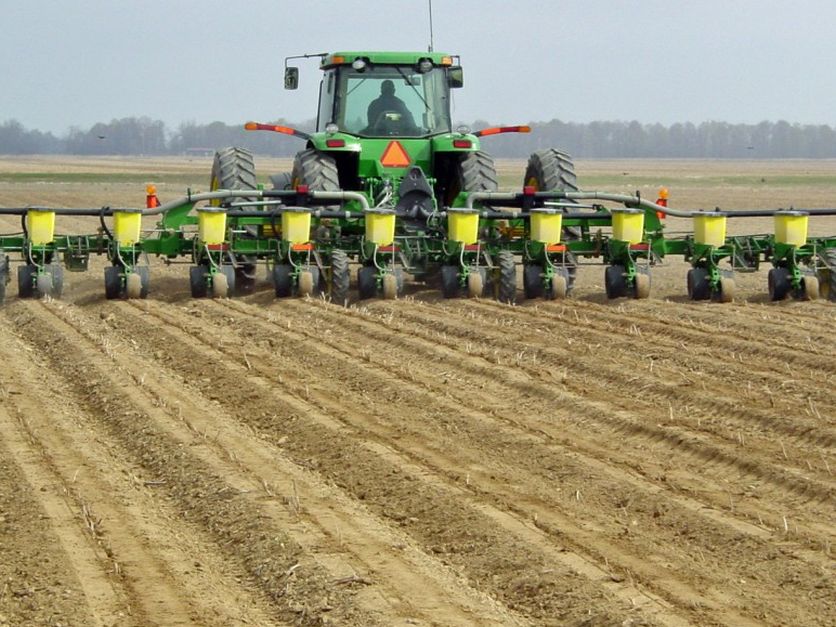With extremely wet field conditions along many waterways and flooding likely to continue in some areas, spring planting will probably be delayed in many parts of the country. Little wonder then that producers across the heartland are talking about whether they will be able to plant a crop this year and whether crop insurance will cover losses.
If a grower has crop insurance, he or she may be able to file for prevented planting provisions, or possibly replant, or plant another crop later. But figuring out which options are best can be complicated.
“Every flood is unique, and every farmer’s situation is unique,” USDA's undersecretary for farm production and conservation, Bill Northey, said in a recent interview with Agri-Pulse.
Nowhere is that uniqueness more evident than in the complex rules regarding prevented planting and replanting, says Ruth Gerdes, president of The Auburn Agency in Auburn, Neb.
Prevented planting payments can be made if an insured cause of loss occurred during the prevented planting insurance period and resulted in the inability to access a field that otherwise could have been planted. If there is any reasonable way a producer could access the field, the producer would be expected to do so if the field is dry enough to plant. Prevented planting payments will not be made if there was any access to the acreage, according to USDA’s Risk Management Agency (RMA).
“It’s almost on an individual, case-by-case basis,” Gerdes says about preventing planting and replanting rules. She fears that a lot of growers will have an “ugly awakening” when it comes to potential qualifications and indemnities if they don’t work closely with a crop insurance agent who understands how the various programs work.
“Work with your agent to understand the best agronomic solution for your farming operation,” she advises growers. “It may be the most important discussion you can have this year.”
For example, the amount of prevented planting (PP) coverage is calculated as a percent of the insurance guarantee the insured would have received for a crop planted on time. Suppose a producer’s insurance guarantee is $100 an acre. If the producer insures a crop with a 55 percent PP coverage factor, the PP payment would be $55, or 55 percent of the guarantee, according to RMA. The PP factor varies by crop, based on an estimate of pre-planting costs. Final planting dates and late planting periods vary by crop and by geographic area. The appropriate dates also can be found on the RMA Actuarial Information Map Viewer.
However, there are also other factors to take into consideration under prevented planting, including the 20/20 rule. Gerdes says that a unit with 100 or more acres must have at least 20 acres where planting is prevented. If the unit has less than 100 acres, the PP acres must equal a minimum of 20 percent of the unit’s total acres. The insured must report their intent to not plant to their crop insurance agent within 72 hours of making that decision.
If the acres are deemed eligible, the producer will receive 100 percent of the PP indemnity if acres are left idle. The producers' Actual Production History (APH) is not affected by PP, but if there are planted acres within the field, a weighted average will be used to determine the APH.
On a field that was intended for corn that qualifies for PP, a second crop may be planted the tenth day after the final planting date, if the crop has a late planting period of 10 days or more. The producer must buy insurance for the second crop at the full premium. The producer will receive a 35 percent indemnity on the crop that couldn’t be planted and pay premium that is 35 percent of the normal rate. The APH will be determined using 60 percent of the producer’s approved yield. If a second crop is planted before the late plant period, PP may not be declared for the original crop, with no premium or indemnity due.
Gerdes says a cover crop may be planted on acreage deemed PP and the producer will receive 100 percent of the PP indemnity. The cover crop acres may not be hayed or grazed prior to Nov. 1, or otherwise harvested for grain at any time. The cover crop must also be approved by NRCS guidelines per respective county.
Late planting is available after the final plant date for the respective county/crop, but there will be a 1 percent indemnity reduction each day after the late plant period until the crop is planted. For example, soybeans planted 6 days after the late plant period would have a 6 percent indemnity reduction.
Documentation of your actions is key, notes an RMA spokesperson, but the need for “hard records” versus “soft records” may also be a challenge for flood victims. Hard records include certified scale tickets, bins measured by an adjuster or the Farm Service Agency, and precision ag records for both planting and harvest.
Gerdes says growers who are certified as precision farmers will be able to document yields, but those with grain stored in damaged bins who did not have some type of “hard” record could be at a disadvantage when it comes to calculating yields for future crop insurance coverage. The crop insurance industry hopes RMA will provide additional direction recording “hard” versus “soft” records for flood-damaged victims.
“We have a farmer who grew 67 bushels an acre soybeans in 2018 but his stored crop was ruined when floods destroyed his bins,” says Gerdes. “Without precision, he would have had to use a much lower yield (60 percent of a “T” or Transition yield) to calculate future crop insurance coverage."
For more information, the RMA recommends visiting its Prevented Planting web page or talking to your crop insurance agent.
For more news, go to: www.Agri-Pulse.com


